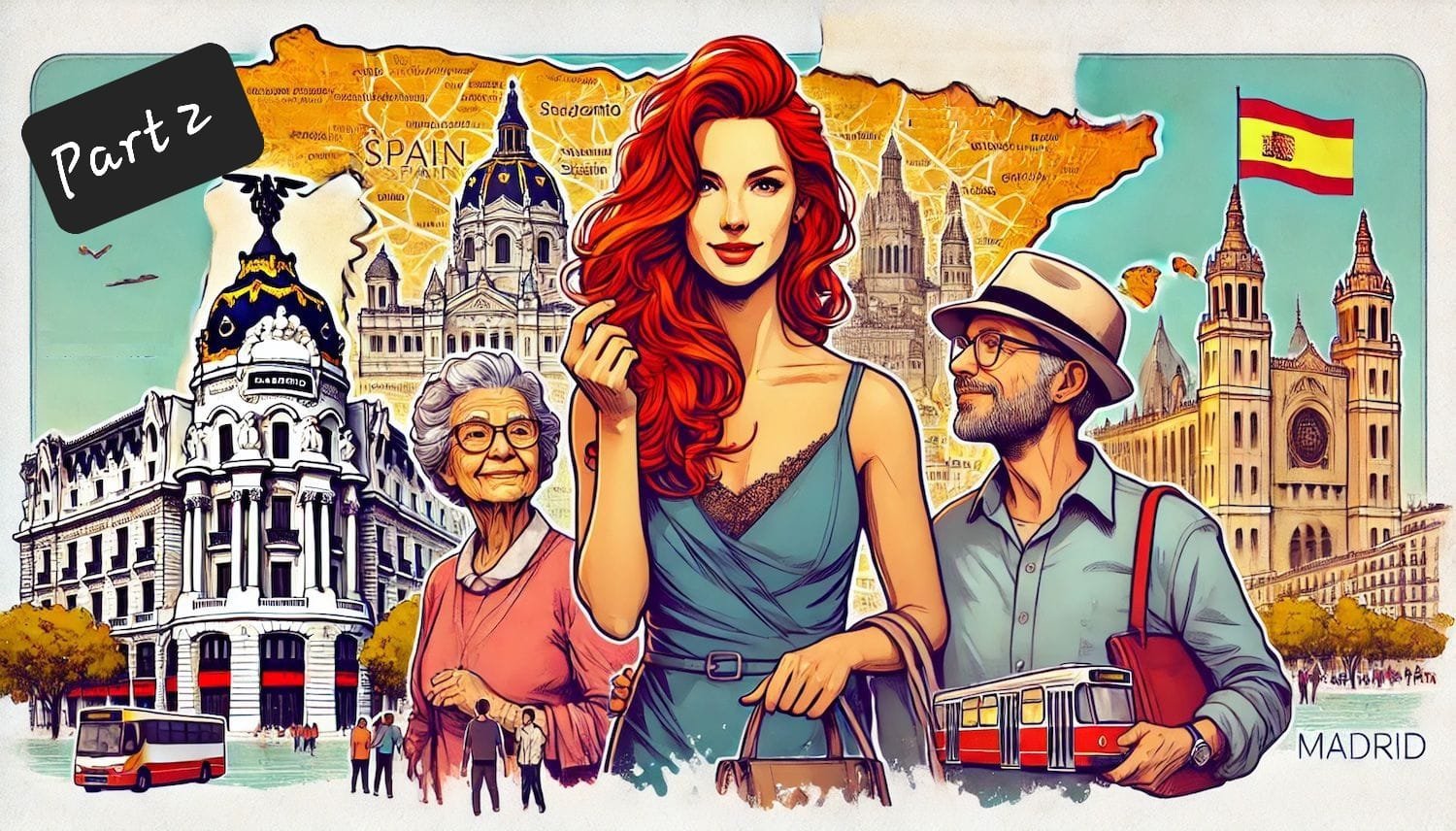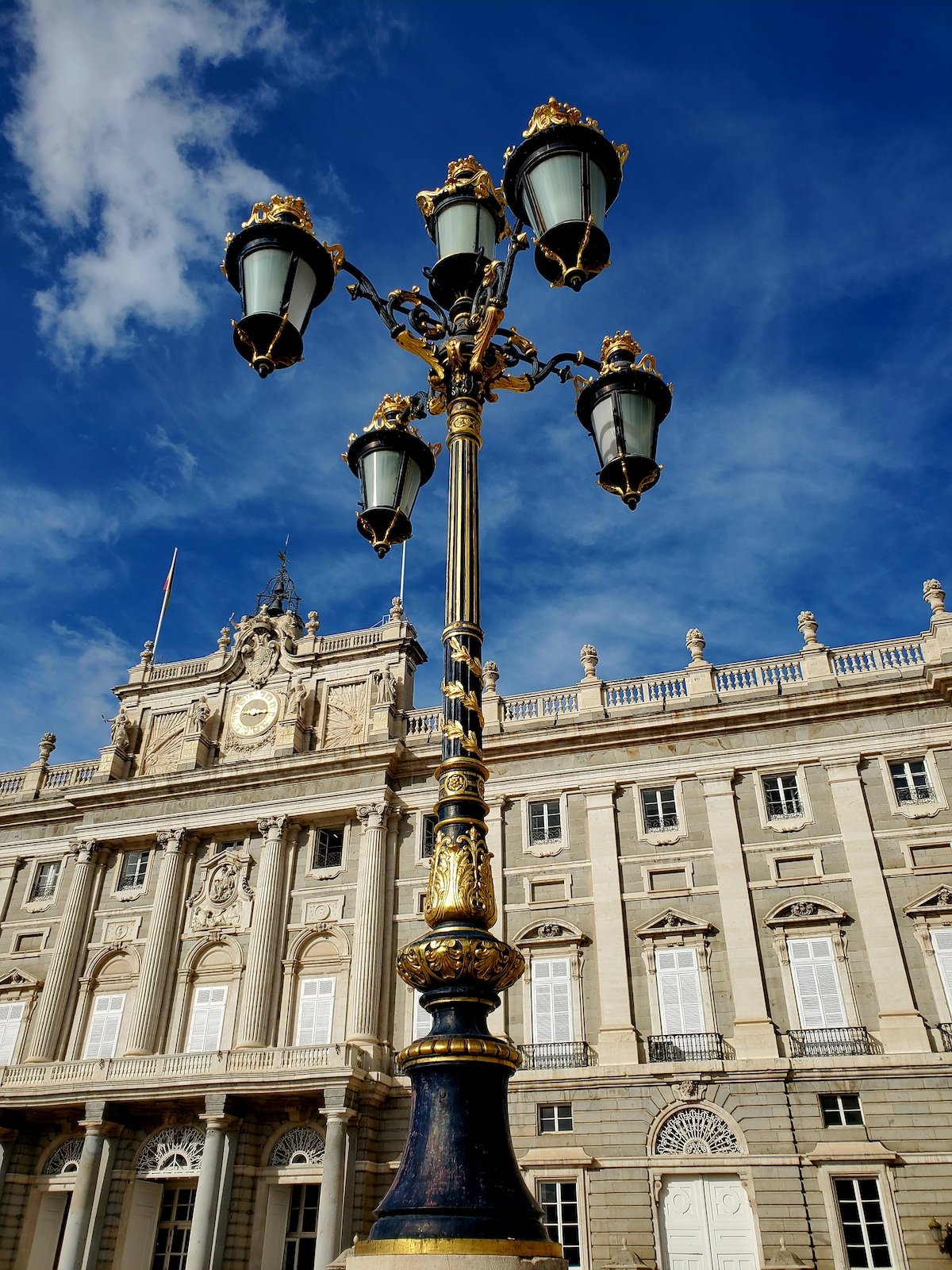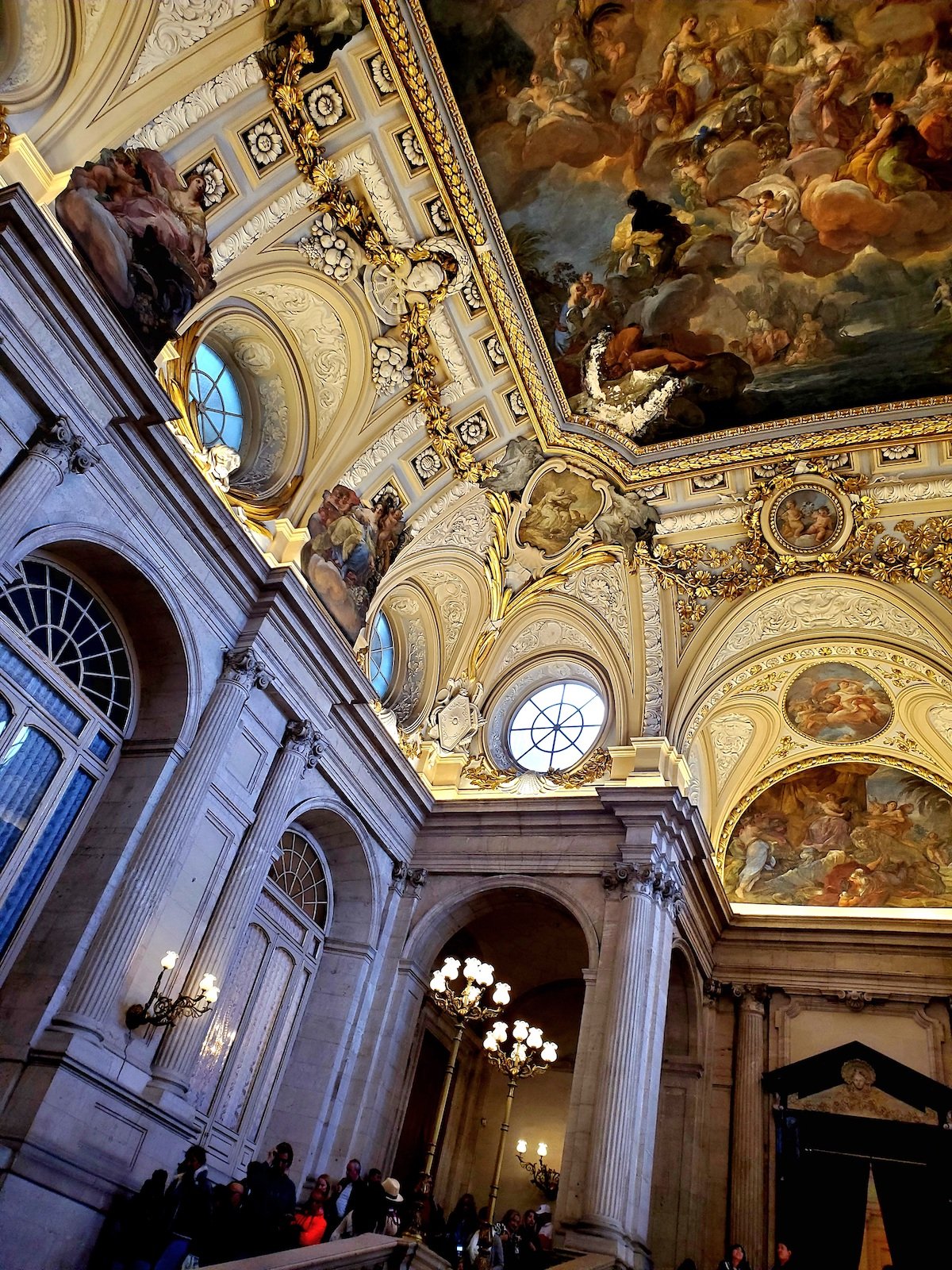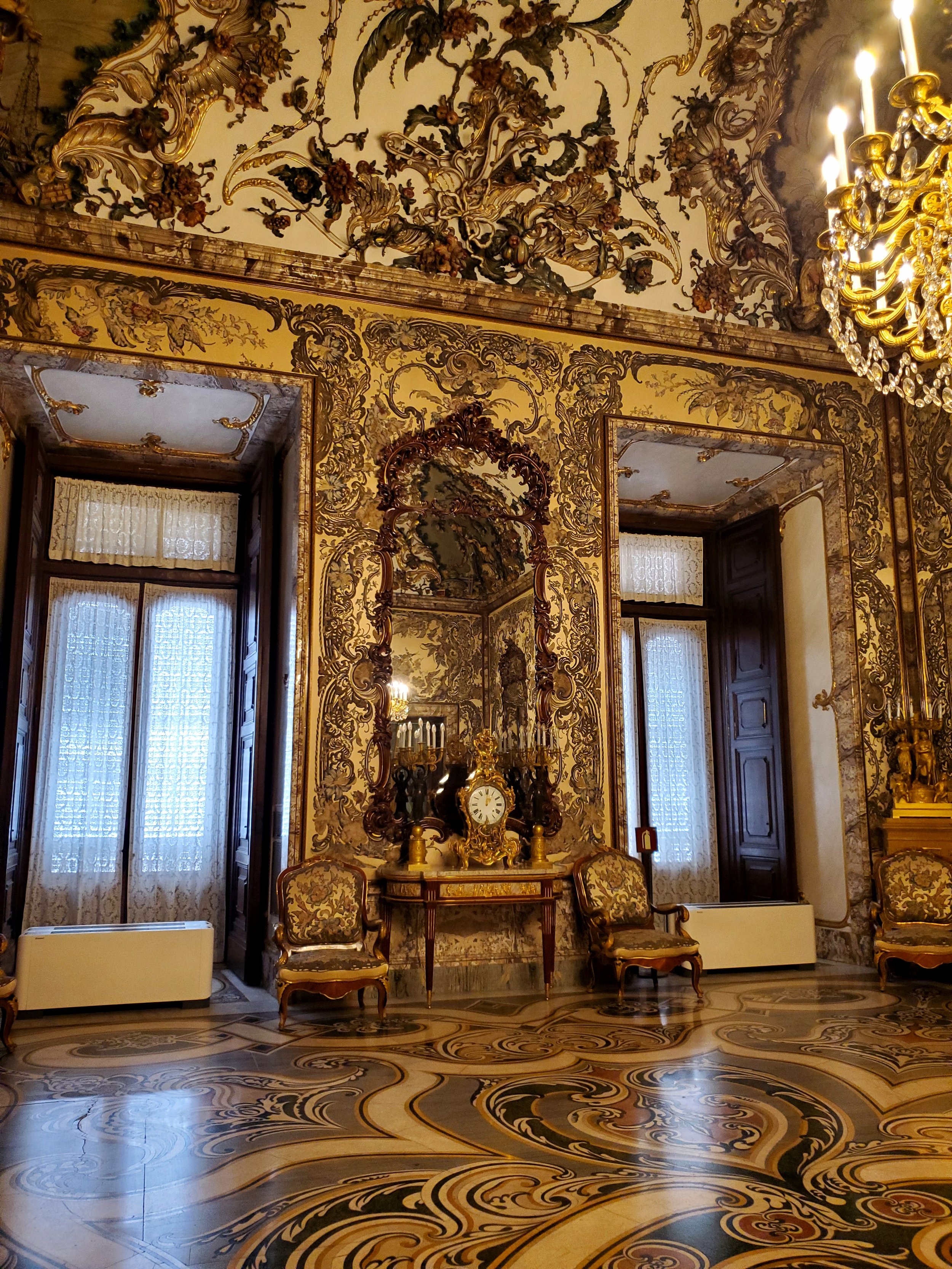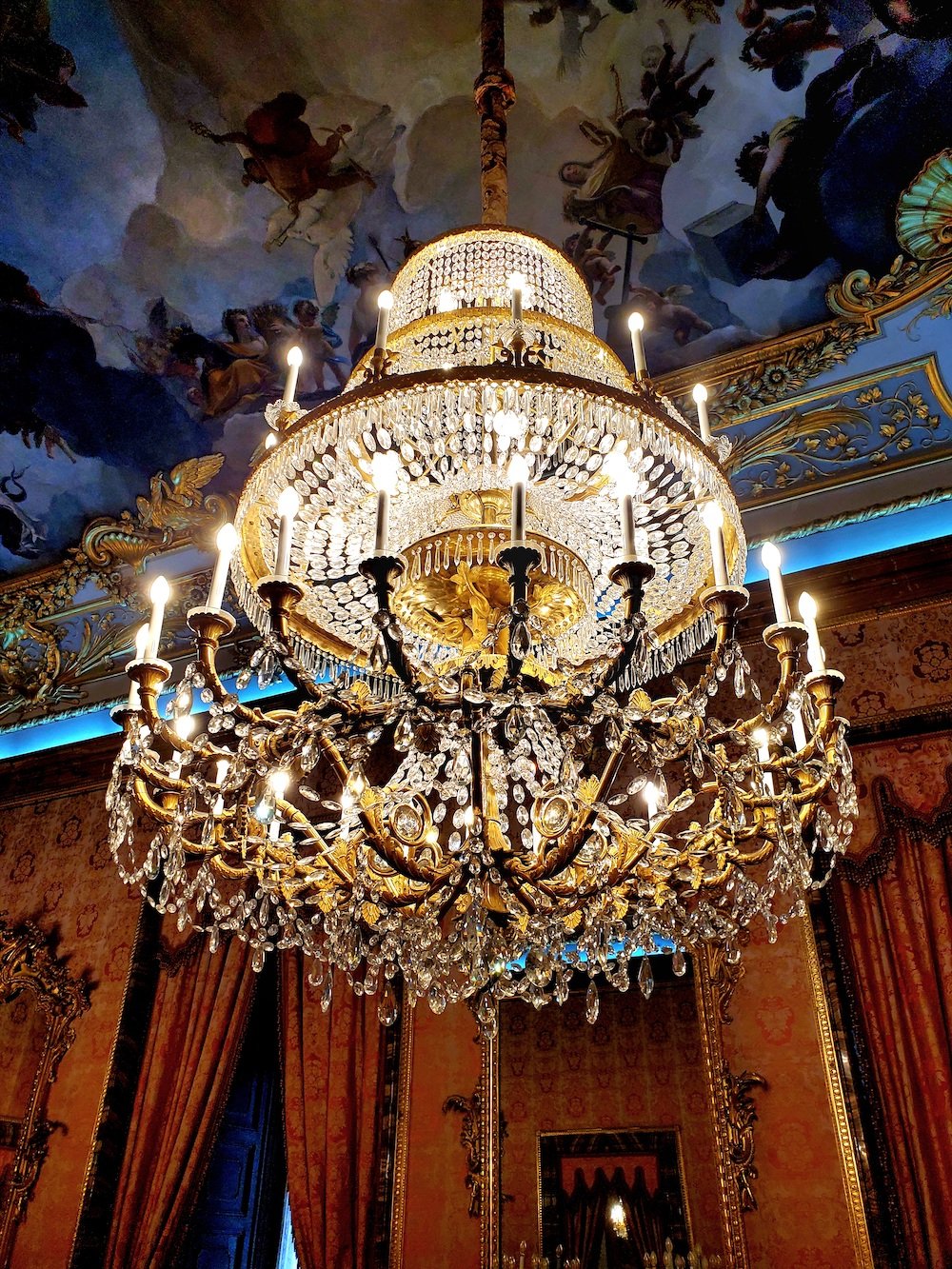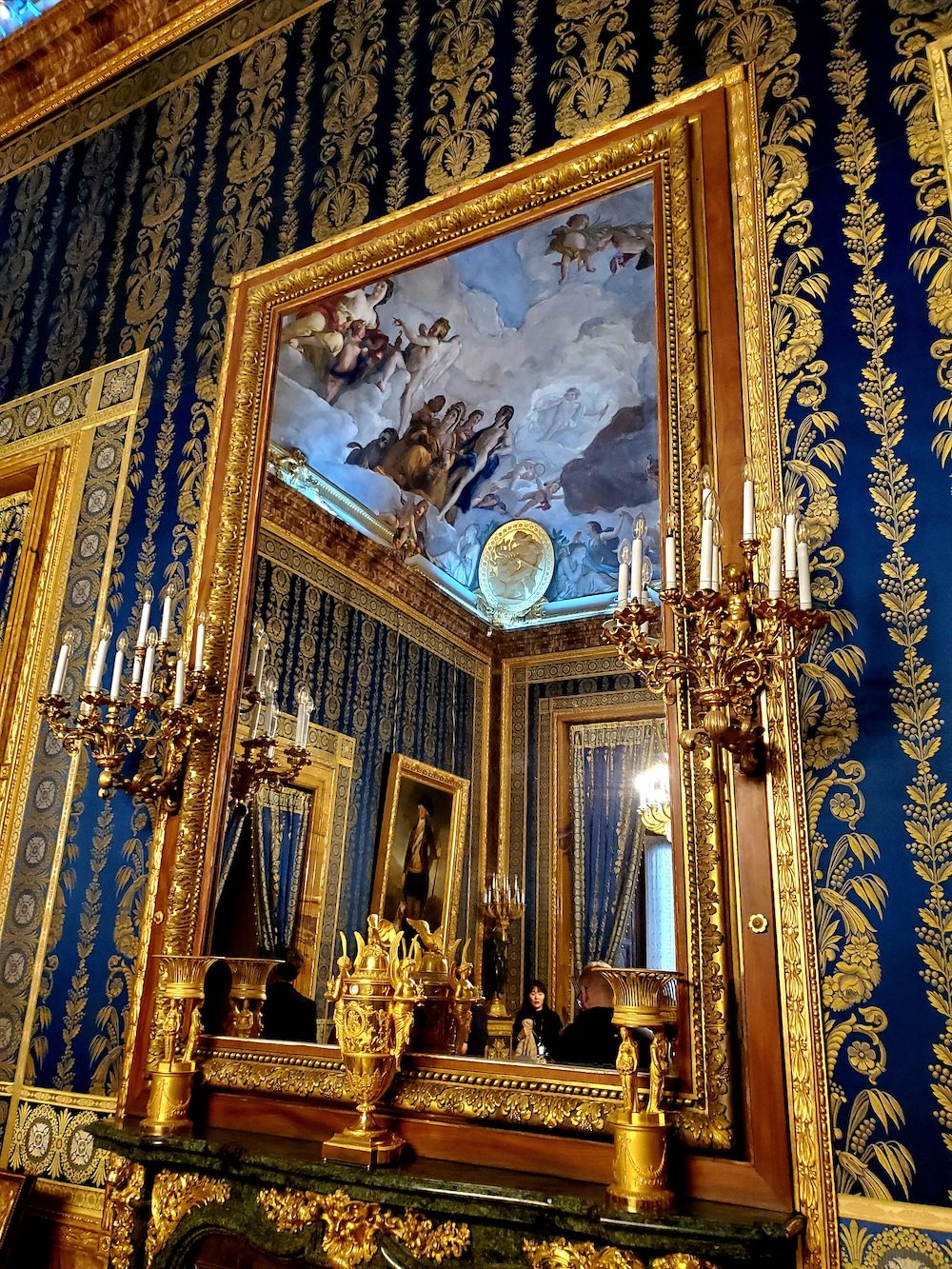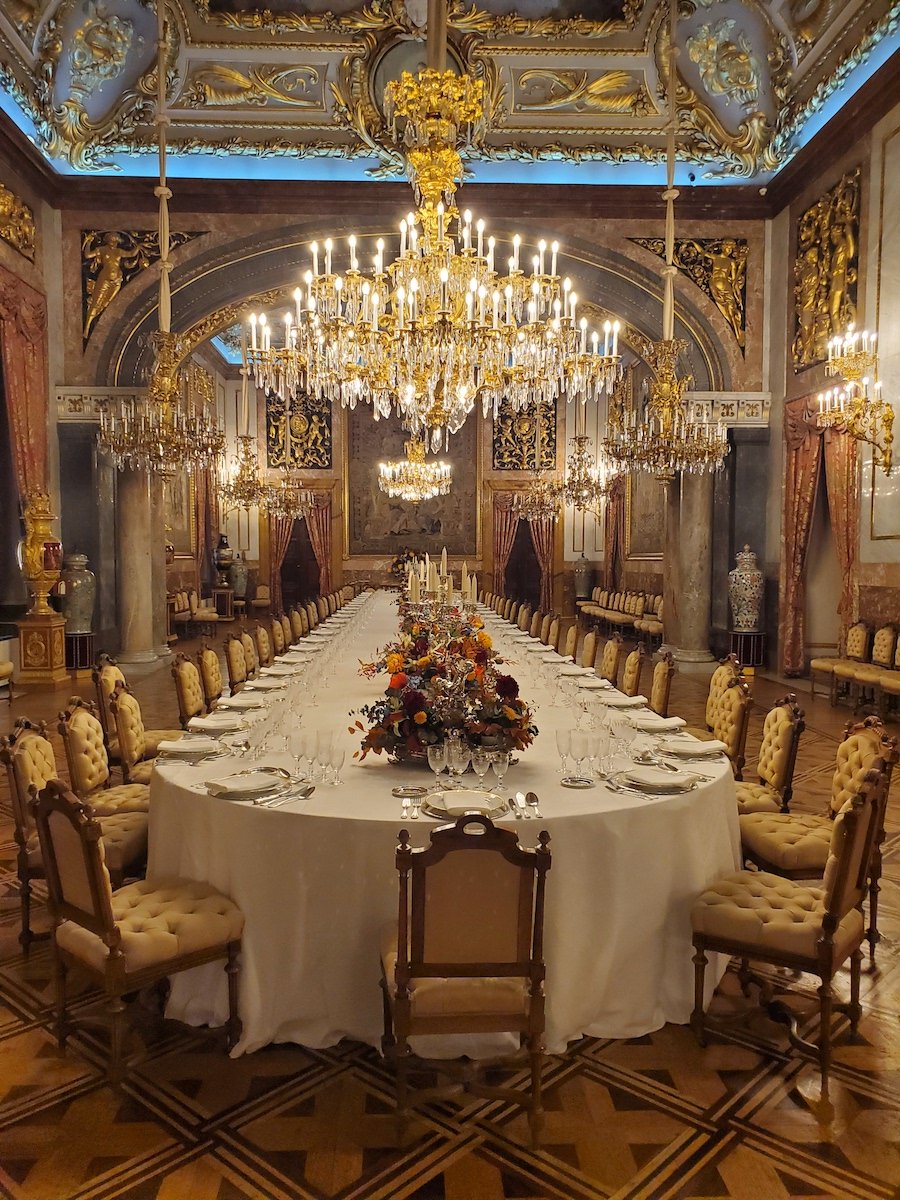Click here to read the previous post, Adjusting to Life in Spain: My First Visitors to Madrid! (Part 1)
Day 6: Lope de Vega Casa-Museo Tour
Since my mom and brother love reading and books and history as much as I do, I knew (or hoped, anyway) that they’d love taking this guided tour of the house-now-museum of the famous 16th century playwright Lope de Vega.
The front entrance to the Lope de Vega Casa-Museo.
By the way, if you squint real hard, you can just make out the inscription above the door, which is in Latin: "Parva propria magna aliena parvi." This roughly translates to: "A small thing of one's own is worth more than a great thing of another's."
When it comes to famous writers in Spain, Lope is second only to Miguel de Cervantes, who kindly said that Lope de Vega was el fénix de los ingenios (the phoenix of wits), which was pretty nice considering that Señor de Vega was much more popular (and rich) than Cervantes and often put him down.
Source: Lope de Vega Casa-Museo
Although they seemed to respect each other's talents to an extent, their rivalry was due to Cervantes’ criticisms of Lope's popular style (people loved him) and Lope's dismissive attitude toward Cervantes' literary style (critics loved him). I think it’s rather telling that Lope de Vega’s house in on Calle de Cervantes (Cervantes Street).…
And Cervantes’ remains are in a convent on Calle Lope de Vega (Lope de Vega Street)....
Our guide was very enthusiastic and knowledgeable of Lope’s life and guided us through this incredible house while telling us not only historical facts about the writer, the house and the era, but also stories about the man. Although everything in the casa-museo except two paintings were reconstructed based on Lope’s letters and will, it still felt very authentic.
Lope de Vega’s writing desk.
When Lope was just 20 years old, he fell in love with Elena Osorio who was, unfortunately, married. That didn’t stop them from having a passionate affair, all while writing comedy plays for her father. Oh, the gall! And then when Elena’s husband died, she didn’t even stay with Lope; instead, she married a wealthy businessman. Lope, sad and resentful, wrote some rather libelous verses against her and her family, which landed him in jail.
But even that didn’t stop him. While imprisoned, he continued to write new poems which then earned him a sentence of exile from Madrid for six years. And what does he do on the way out of Madrid? Kidnaps 16-year-old Isabel de Urbina and marries her.
This writer was a father of seventeen kids (but only fourteen survived) and a devoted priest later in life, although that didn’t stop him from begetting some of those seventeen children. He wrote over a thousand plays in his 73 years of life.
Source: Lope de Vega Casa-Museo
Anyway, there are so many more interesting stories about him – so I highly recommend checking out this guided tour of Lope de Vega’s house (it’s free and just 30 minutes).
Day 7: The Royal Palace Tour
Whether you are a fan of a country’s royalty or not, I think it’s always fun to take a tour of the royal palace – especially when it’s a guided tour that allows you to bypass the lines.
El Palacio Real (The Royal Palace).
The tour actually started in the Plaza de la Villa (Town Square), a plaza that I have walked through many a time, never having a clue that it is the, or at least one of the, oldest square in Madrid. Although now there are other plazas (squares) that are much busier and more well-known (like Plaza Mayor), this one dates back to medieval times when it was a central hub for the town. Hence the name.
Plaza de la Villa (Town Square).
Our guide pointed out a couple buildings that are some of the city’s oldest structures, from back in the 15th century, such as the Casa de la Villa (Town House), which used to be the city hall, and the Torre de los Lujanes (Tower of the Lujanes).
So from there we walked over to the Palacio Real (Royal Palace) and just strolled in through a side entrance with our Devour Tours historian guide – who, by the way, was excellent: knowledgeable, enthusiastic, fun.
An outdoor passageway in the Royal Palace's square.
At about 135,000 square meters (1,450,000 square feet) and with over 3,400 rooms, Madrid’s Palacio Real is the largest palace in Europe. Even bigger than Buckingham Palace in London and Versailles in France! On the other hand, it’s not the primary residence of the Spanish royal family, who reside in the more modest Palacio de la Zarzuela just outside Madrid. This one is just used for state ceremonies and paying tourists.
Source: Wikimedia Commons
I learned far more information – dates, names, suffixes (as in So-and-So the fourth) – than I can possibly remember, so I will just leave you with a handful of photos and a recommendation to take the Skip-the-Line Palace Tour. It really was very interesting – and a bit visually overwhelming. The patterns!!
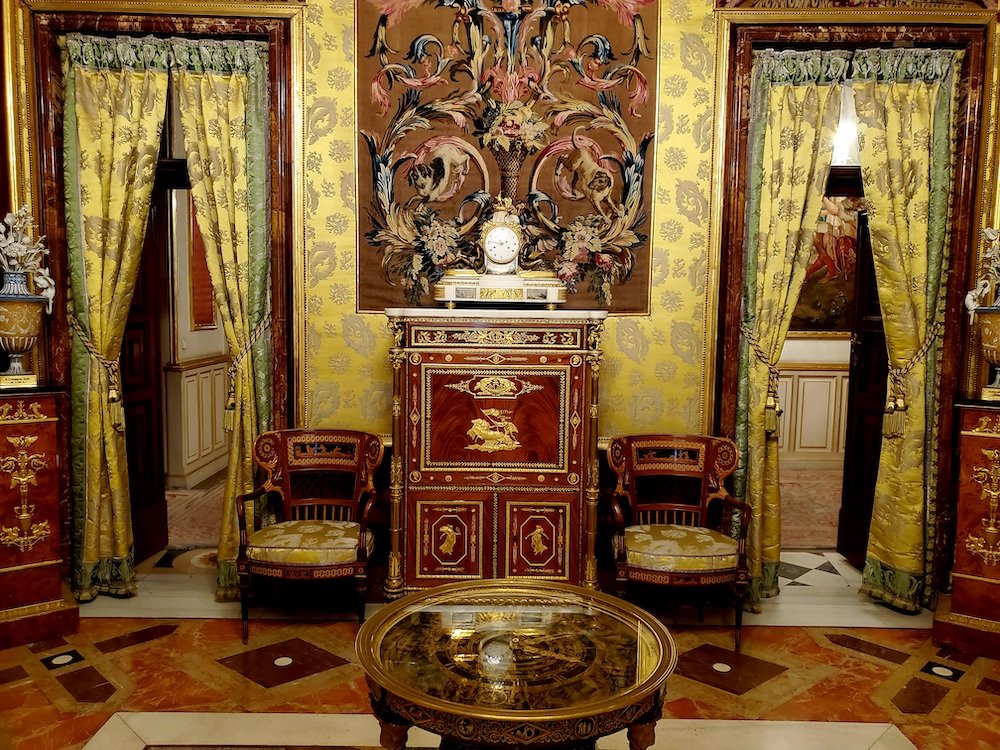
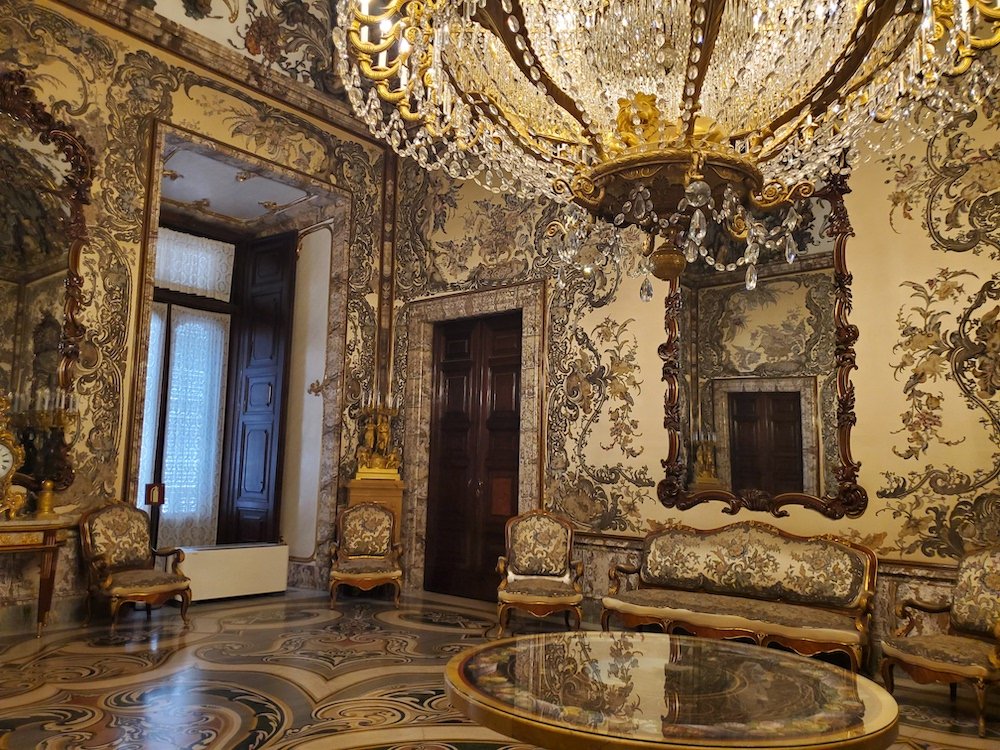
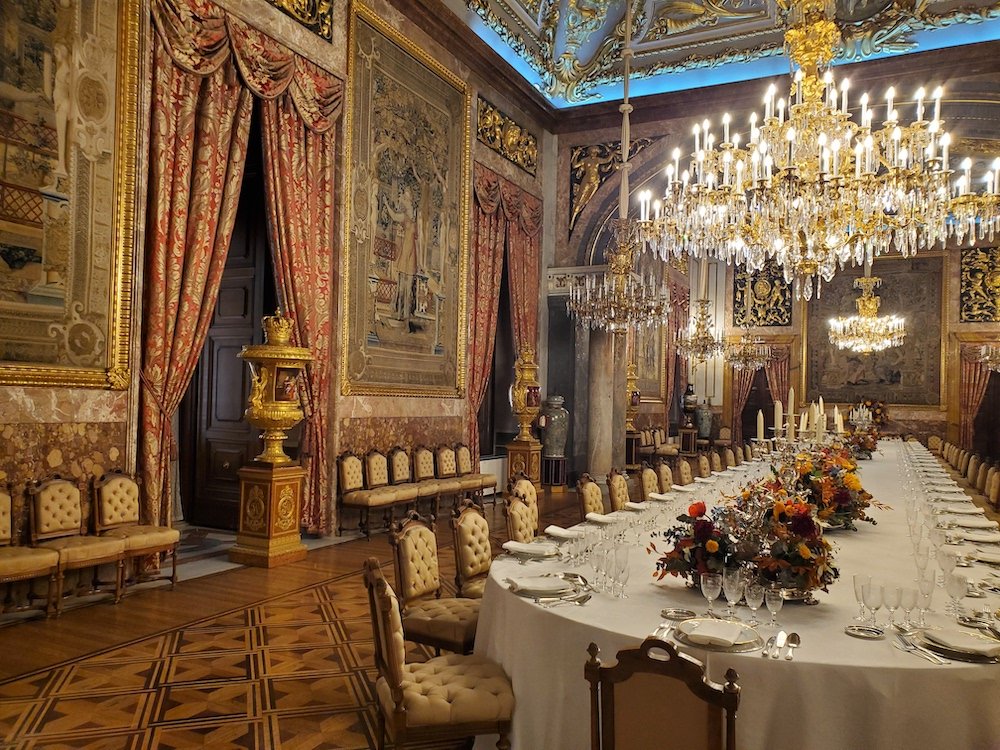
Day 9: Tapas and Flamenco Tour
After several tours and much walking around in general, on day eight we just stayed home. Plus it was raining with dramatic thunder and lightning. This is the first apartment I’ve lived in that I really love (as opposed to just loving that it’s cheap or has four walls and a ceiling), so it was super pleasant to just hang out here with my mom and brother. There was tea and reading, wine and laughing, home cooked dinner and several episodes of The Good Place.
But by the next day, it was back to the Spanish education of my family! We took another guided tour from Devour called Tapas & Flamenco Tour (and no, I’m not getting a commission from them!).
I’d seen a flamenco show in Sevilla (you can read it here in Spanish) (yes, written by me!) a year ago and was very keen to see another, different kind of flamenco performance. The one in Sevilla (FYI it’s “Seville” in English and “Sevilla” en español) was in a theater with row seating and no food or drink allowed inside – just as with any live theater show.
The one we saw here in Madrid was different, from start to end. As they (rightfully) claim on their site: “So much more than just a food tour and a live performance, this immersive evening takes you into the heart of these two time-honored staples of Spanish culture.”
The guided tour met in Plaza de Isabel II in front of the Teatro Real (Royal Theater), a big, beautiful opera house established in 1850 (I mean really, what building hasn’t been established prior to 1860 in this city??).
Plaza de Isabel II
After introductions (there were three sets of families on this particular tour), we headed right over to a taberna for vermut (vermouth) and tapas, including croquetas de jamón (ham croquettes), my new favorite food here in Spain!!
Croquetas de jamón (ham croquettes), yum!
Plus the best olives I have ever tasted. I noticed one fellow on the tour didn’t try anything, which seemed a little odd. But my brother, who is not a fan of olives, tried them upon the tour guide’s claim that even non-olive-lovers generally will like these. And he did! And do I remember what they are called? No I do not.
We visited a dance costume store to see the typical clothes flamenco dancers wear, and learned, among many other interesting facts, that flamenco shoes have small nails embedded in the bottom on the toes and heels to enhance the sound of the taconeos (clicking heels) on the wooden stage.
Source: Flamenco School
Before going to the theater, we made another stop for more tapas – this time to a jamonería (ham shop) for a degustación de jamones y queso (ham and cheese tasting), along with a glass of cava (Spain’s version of champagne). I noticed that the same guy didn’t touch any of this (not the ham, not the cheese, not the sparkling wine), but Mom, Bro and I found it delicious.
Source: Mercado Jamón Ibérico
And then, finally, we got to the theater, Las Carboneras Tablao Flamenco. It was on one of those delightfully Spanish alley-slash-streets that I love so much. It seems like you’re meandering through some empty street or sidewalk (because there are no cars here) with long shadows and a very historical feel, and then suddenly among all the backs or sides of buildings is a door, and voila! you’re staring at a bustling business.
We sat at tables that were reserved for us and ordered a drink, plus received some tapas. Mr. non-eating, non-drinking guy was still not partaking of anything. Was he allergic to all food? Was he expecting a flamingo show? Had he taken Ambien and was just sleep walking? I’ll never know because he and his bored visage left right after the show, even though we had one more stop.
So how do I describe this intense and sometimes emotional dance? I don’t. I offer you up a short (1:45) video. There were three female dancers and one male dancer, who went last, and I was so caught up in the dancing that it didn’t occur to me to get this amazing performance on video, not that a video ever truly captures a live experience. Also, I mostly hate it when people are so busy filming that they don’t actually pay much attention to the thing they’re filming.
Our last stop was a classic madrileña tavern for a shot and dessert all in one. That is to say, licor de Madroño served in edible chocolate lined cups.
Source: The Pack Language Experience
A quick word on, well, the word “Madroño”: Licor de Madroño translates to “Madroño liqueur” because it’s made from the fruit of the Madroño tree (which, by the way, is the city’s symbol). This brings me to a sculpture I’ve seen in Puerta de Sol called El Oso y el Madroño (The Bear and the Strawberry Tree), which leads me to ask the question: Wait, what?? Strawberries don’t grow on trees, right? No. But there is a tree called Arbutus unedo, which is commonly known as a strawberry tree because its fruit, the arbutus berry, kinda looks like a strawberry. Kind of.
Source: Gates Garden Center
Anyway, I digress. A lot. But it was something that had been perplexing me and I just had to figure it out.
Day 10: Halloween Wine Tasting
What better way to get a taste of Spanish wines than to go to a wine tasting while you’re visiting your daughter/sister in Spain, right?
So I took the fam to Madrid & Darracott, a place I’ve enjoyed rather a few wine tastings. I thought it would be the perfect blend of knowledge (the host is a wine expert), fun (the wine expert has that hilarious British humor), and deliciousness (the British guy pours a generous glass), and I was right. Mom and Bro enjoyed the wines and the funny British wine expert!
Source: Madrid & Darracott
Um, what’s so Halloweeny about a wine tasting? Great question. The answer: That the weekly tasting just happened to be on Halloween. A few people dressed up (apparently as drunkards, as some were well intoxicated before the first sip), and the theme of the wine tasting was “Spooky wines” which just meant all hearty reds. Oooh.
So there you have it. This was just a “major points” overview of hosting my first out of town/country/continent visitors, but the part I didn’t include here is how much I fucking loved having my family come see and experience my new life with me in between all the random bum-rush hugs I inflicted upon them.
Click here to read the next post, Adjusting to Life in Spain: Using the Spanish Healthcare System
Note: All photos taken or created (using DALL-E) by Selena Templeton, unless otherwise noted.
If you enjoyed reading this travel blog, check out some of my other adventures:
